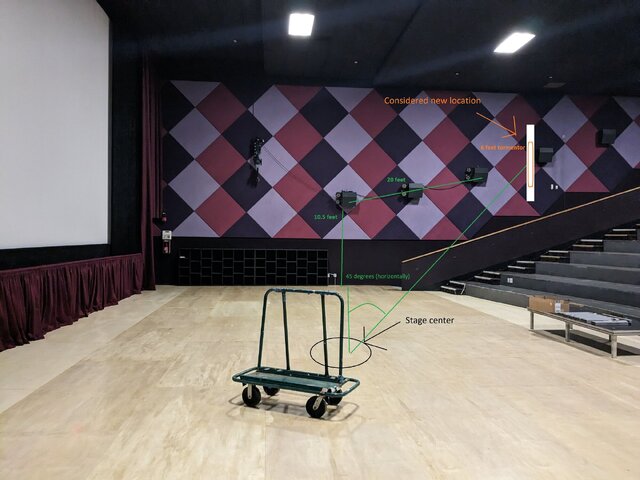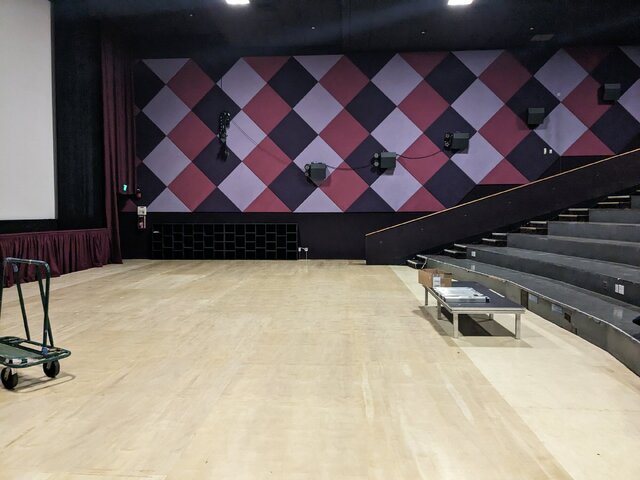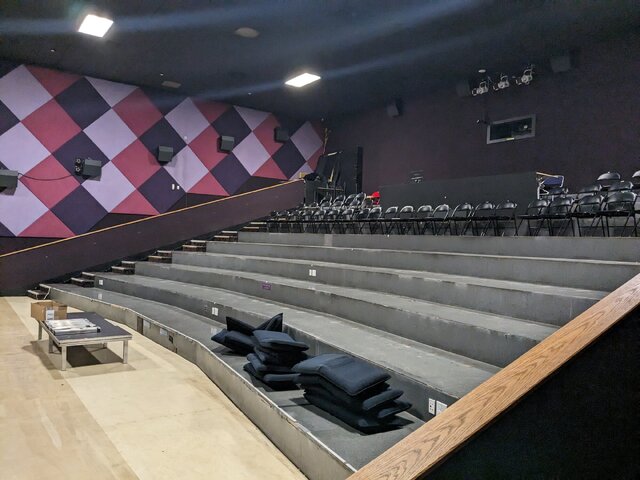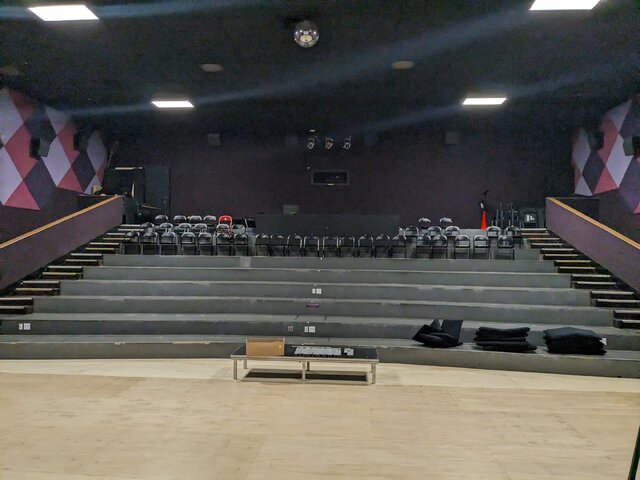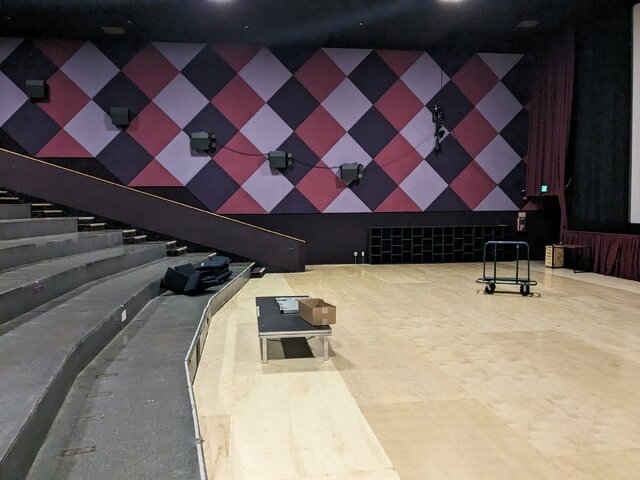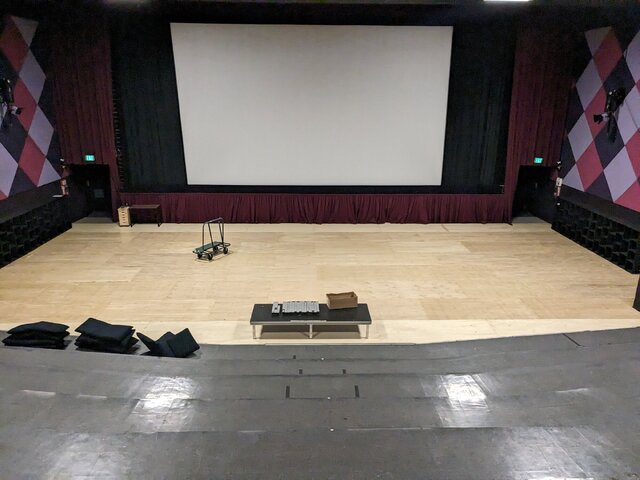SophiaRodriguez
Member
Hi everyone,
I'm an amateur lighting engineer, and we're doing some construction in my space.
The space is for live bands, live plays, projections, movies, etc (up to about 250 people).
I have about 20x lights (some weak LEDs, some "light bars", some halogen, nothing too fancy)
We have tormentors on the wall (for the lights), but the existing location is not ideal (as it "hits" the actors at 90 degrees, which means that only the sides of the actors are lit).
My construction guy offered me to add 2x NEW tormentors on the wall (6 feet each), one on the left and one on the right.
I measured 45 degrees (horizontally) from the stage center and marked where it "hits" the wall in the attached diagram.
In the diagram, ORANGE is the potential location of the new tormentor.
GREEN and BLACK are just measurements (of distance and degrees) and general info.
My questions are:
1) Does measuring 45 degrees (horizontally) from the stage center is the "best way" to decide where to put the new tormentors?
2) Can you please suggest what height (vertically) should I install the new tormentor?
As I'm an amateur lighting girl, any additional suggestions would be highly appreciated
Thank you so much!
Sophia
I'm an amateur lighting engineer, and we're doing some construction in my space.
The space is for live bands, live plays, projections, movies, etc (up to about 250 people).
I have about 20x lights (some weak LEDs, some "light bars", some halogen, nothing too fancy)
We have tormentors on the wall (for the lights), but the existing location is not ideal (as it "hits" the actors at 90 degrees, which means that only the sides of the actors are lit).
My construction guy offered me to add 2x NEW tormentors on the wall (6 feet each), one on the left and one on the right.
I measured 45 degrees (horizontally) from the stage center and marked where it "hits" the wall in the attached diagram.
In the diagram, ORANGE is the potential location of the new tormentor.
GREEN and BLACK are just measurements (of distance and degrees) and general info.
My questions are:
1) Does measuring 45 degrees (horizontally) from the stage center is the "best way" to decide where to put the new tormentors?
2) Can you please suggest what height (vertically) should I install the new tormentor?
As I'm an amateur lighting girl, any additional suggestions would be highly appreciated
Thank you so much!
Sophia



